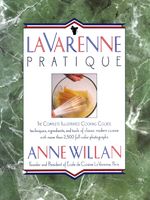Advertisement
Structure of Fats and Oils
Appears in
By Anne Willan
Published 1989
The term “fat” is used by cooks to refer to substances that are solid at room temperature, such as butter, margarine, shortening and lard. “Oil” refers to those that are liquid in normal conditions (exceptions are coconut and palm oil, which remain semi-solid). Food scientists, however, consider all oils to be fats and instead focus their attention on whether a fat is saturated, mono-unsaturated or polyunsaturated. In essence, these names describe different kinds of molecular structure, a saturated fat having the highest number of hydrogen molecules and a polyunsaturated fat the lowest, with mono-unsaturated in between the other two.

